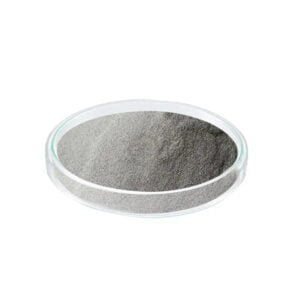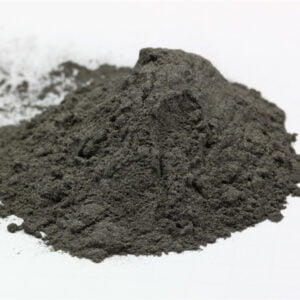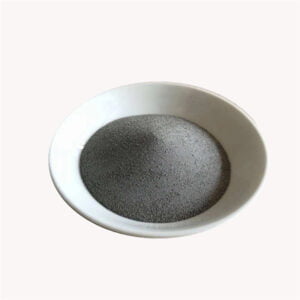二ケイ化モリブデン粉末
目次
二ケイ化モリブデン(MoSi2)は、高温安定性、耐酸化性、熱衝撃特性で評価されている金属間化合物です。粉末として、溶射、焼結、複合材料の市場に供給されています。このガイドでは、MoSi2粉末の仕様、製造方法、使用例、ベンダー、コスト、制限、代替品について検討し、材料エンジニアに情報を提供します。
二ケイ化モリブデン粉末 概要
シリコンを耐火性モリブデン金属と組み合わせることで、溶融や酸化することなく1300℃を超える強度を保持するMoSi2が生成されます。粉末状に変換することで可能になります:
- タービンブレードと工具への溶射コーティング
- セラミックマトリックス複合材を向上させる粒子状強化材の添加
- 粉末冶金によるネットシェイプ熱交換器への圧密化
主な属性
- 融点2030℃の高温安定性
- 空気中1500℃まで耐酸化性の保護SiO2酸化膜を形成。
- 6.2g/cm2の低密度により部品の軽量化を実現
- 熱膨張係数が非常に小さいため、急激なΔT勾配でもクラックが生じない。
ニッケルやコバルト超合金よりもはるかに高い極限環境に耐えるこのシリサイドは、炉の部品から航空宇宙エンジンや極超音速機の前縁に至るまで、熱保護システムに不可欠です。
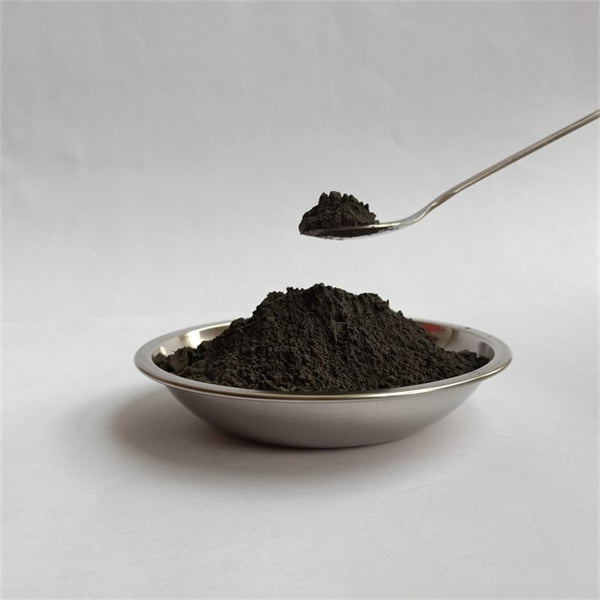
二ケイ化モリブデン粉末 作曲
MoSi2粉末は、わずかな残留炭素や酸素の混入がある比較的純粋な配合から、合金化したり微粒子補強材を加えたりしてカスタマイズされた配合まで様々である:
| タイプ | 説明 | 構成 |
|---|---|---|
| 純MoSi2 | モリブデン+シリコンのバイナリーブレンド | 99% MoSi2 + <1% C, O |
| 合金化合物 | ホウ素、クロム、アルミニウムなどの元素が添加され、Mo-Si-Xの3元/4元が形成される。 | MoSi2 + 5% Cr + 2% B |
| 複合材料 | MoSi2粉末に混合された粒子状酸化物または炭化物 | MoSi2 + 20% SiC |
表1. 二珪化モリブデン粉末の主な種類には、汎用バイナリーブレンドとカスタム合金/複合材料がある。
クロム、アルミニウム、カーボンなどの元素で補強したり、安定したセラミックスで補強したりすることで、CTE、耐酸化性、レオロジーを調整し、最終的な焼結製品設計に適合させる能力が拡大します。
MoSi2粉末の特性と性質
- 外観 - 灰色粉末で、結晶または角ばった形態
- 融点 - 2030°Cで、部品を溶融させることなく溶融状態での焼結が可能
- 密度 - 6.2g/cm3、50%はタングステンの密度
- 耐酸化性 - 圧力0.9気圧まで、保護シリカ層により空気中1500℃まで耐酸化性
- ポアソン比 - 0.18-0.28 鋼に類似
- CTE - 7.8μm/m℃(20~1000℃)の優れた耐熱衝撃性
- 電気抵抗率 - 150-190 μΩ-cmは、部品冷却のために熱伝導率を考慮する必要がある。
この特性は、超合金の制限を超える急速かつ周期的な焼成熱負荷に対する寸法安定性を保証します。延性相の添加は、脆いシリサイドの延性を拡大します。
MoSi2粉末の粒度仕様
工業等級は、分布カットオフに基づいて粉体を分類する:
| グレード | ミクロンサイズ | 典型的な用途 |
|---|---|---|
| -140メッシュ | <106 μm | 溶射コーティング |
| -325メッシュ | <44 μm | 粉末射出成形用原料 |
| -400メッシュ | <38 μm | CMC補強、プレス/焼結部品 |
表2. 溶射から焼結炭化ケイ素への10ミクロン以下の添加まで、メッシュによる一般的な二珪化モリブデン粉末のサイズ分類
粉末分布を指定することで、溶射ノズルの粒子径の制限やレオロジーのニーズと、稠密なプレスや焼結のニーズとの整合性を確保することができます。
MoSi2粉末の製造プロセス
還元とシリサイド - 水素雰囲気下でシリコン粉末と還元された三酸化モリブデン粉末は、1200℃以上でMoSi2を生成し、最終的にボールミルによって分配されます。低純度で不規則な粒子は溶射に最適です。
ガス噴霧 - 不活性ガス中でインゴットを誘導溶解し、粉末にアトマイズすることで、酸化を管理し、粒子径を良好に制御します。球状にすることで、パウダーベッドのパッキングと焼結挙動が改善される。しかし、歩留まりが低く、粉末の価格も高くなるため、化学的な生産が必要となる。
プラズマ球状化 - プラズマトーチに注入された誘導加熱原料は、完全に溶融する代わりに、不規則に還元/シリサイド化された粒子を丸め、流動性と充填性を向上させるとともに、ドレインメルト精製による原料ロスを最小限に抑えます。他の方法との中間的な粉末品質とコストプロファイルを提供します。
純度、粉体特性、価格のトレードオフを評価することで、用途要件に合致した最良の価値ある製造方法を決定する。
業界標準と仕様
政府や業界団体は、さまざまなMoSi2粉末の規格を発行している:
| エンティティ | 標準番号 | 説明 |
|---|---|---|
| パルベライゼーション技術連盟 | FS-150 | 溶射グレード |
| DIN ドイツ規格協会 | DIN17742 | 粉末冶金グレード |
| ASTMインターナショナル | C1765 | 試験方法標準 |
| ISO 国際標準化機構 | ISO 21825 | 機械的および物理的試験方法 |
表3.二珪化モリブデン粉末に適用される国際的な品質および試験基準をリードする
要求される化学的性質、粒子径、典型的な不純物の閾値、および最終用途の機械的試験プロトコルを検討することで、使用シナリオを網羅する認証ガイドラインに照らして、調達したMoSi2ロットを適切に指定し、適格性を確認することができます。
MoSi2粉末の用途
極端な熱安定性と耐酸化性から恩恵を受ける用途は枚挙にいとまがない:
溶射コーティング
- 炉のマッフル管、固定具、トレイ
- 耐火金属加工用るつぼ
- 航空機タービンブレードの浸食と熱保護
焼結
- 電気ヒーターの接点とサポート
- ガラス製造における高温ガスシールと電極
- レードルなどの溶融金属浸漬用金具
複合材料
- 窒化ケイ素および炭化ケイ素の強化添加剤
- 熱管理用電子基板フィラー
1000℃を超える温度変化にも酸化されることなく寸法安定性を必要とする焼結、コーティング、複合材料の製造工程では、二珪化モリブデン粉末が考慮されます。
二ケイ化モリブデン粉末 メーカー&ベンダー
MoSi2粉末を製造・供給している信頼できる業者には、以下のようなものがある:
| サプライヤー | 所在地 | 製造方法 |
|---|---|---|
| サーモフィッシャーサイエンティフィック | 米国 | 還元とケイ化 |
| アトランティック・エクイップメント・エンジニア | 米国 | ガス噴霧 |
| フェニックス・サイエンティフィック | 米国 | プラズマ球状化 |
| 中国 モリブデン | 中国 | 還元とケイ化 |
| 日本 ニューメタルズ | 日本 | ガス噴霧 |
表4.高純度または大量の工業用途に適したモリブデン-シリコン粉末を提供する注目すべき企業
二次流通業者も商業販売を行っているが、ベストプラクティスは、最高の価格とトレーサビリティを実現するために、一次工場から直接小ロットを仕入れることである。
MoSi2粉末のコスト要因
| ドライバー | インパクト |
|---|---|
| 製造方法 | ガス噴霧のコストは化学製品の5~10倍 |
| 材料の純度 | 微量元素と粒度管理で価格上昇 |
| 購入量 | トン+数量割引で30%まで可能 |
| パウダー形状 | 高い真球度均一性 25-50%を追加 |
| アプリケーション仕様 | 分配と検証の厳格化が価格を押し上げる |
表5. 二ケイ化モリブデン粉末の価格設定に影響を与える供給チャネルのダイナミクス
一般的な珪化グレードの$50/kgから、高純度プラズマ球状化フラクションの$300/kgまでが期待できるが、微妙な品質のばらつきにより価格設定は直線的でない。
MoSi2パウダーの長所と短所
| メリット | デメリット |
|---|---|
| 2030℃の融点は極端な温度でも機械的特性を維持する | 脆い金属間化合物で、完全に緻密化するとひずみで割れやすくなる。 |
| SiO2層により1500℃まで表面酸化に耐える | グラファイトよりも熱伝導率が低いため、発熱体の接触に考慮する必要がある。 |
| タングステンの代替品より密度が低い | 高いホットプレス圧力をかけずに完全に高密度化する製造上の課題 |
表6. 二ケイ化モリブデン粉末の用途を検討する際に考慮すべきトレードオフ
MoSi2は、316ステンレスや超合金の代替候補とは比較にならない加工性と脆性の課題にもかかわらず、極端な熱安定性のニーズを解決する独自の機能を果たし、高密度化の複雑さを考慮する前でも、コストは5分の1である。
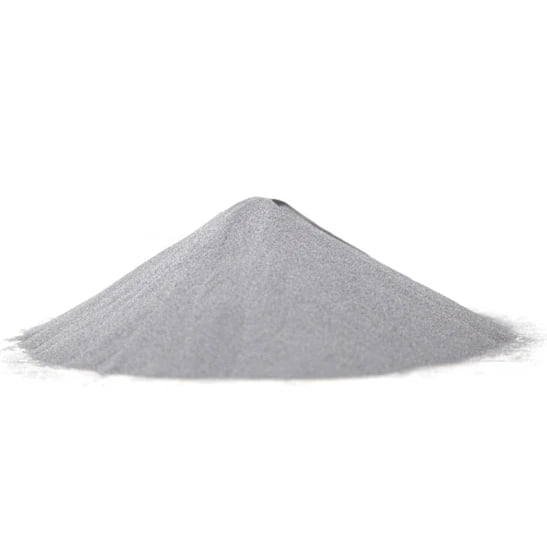
MoSi2パウダーと代替品の比較
| パラメータ | MoSi2 | W | タ | レ | Hf |
|---|---|---|---|---|---|
| 融点 | 2030°C | 3410°C | 2996℃ | 3180°C | 2230°C |
| 耐酸化性 | 1500℃まで | 貧しい | 貧しい | 貧しい | 貧しい |
| 密度 | 6.2 g/cm^3 | 19 g/cm^3 | 16 g/cm^3 | 21 g/cm^3 | 13 g/cm^3 |
| 熱伝導率 | 低い | 高い | ミディアム | ミディアム | ミディアム |
| 電気抵抗率 | 高い | 低い | ミディアム | ||
| コスト | $$$$ | $$$$$ | $$$$$ | $$$$$ | $$$$$ |
表7. 二ケイ化モリブデン粉末と他の耐火物金属粉末との定性的比較
熱性能の限界と製造性、ライフサイクルコストとのバランスを考慮した複合材料の要件は、エンジニアにとって適切な超高温材料へと導きます。
よくある質問
Q: MoSi2は1500℃以上の空気中で酸化しますか?
A: はい、0.9気圧の圧力下で1500℃を超えると、結晶性SiO2表面層はより多孔質に成長し、保護機能を失います。
Q: MoSi2コーティングにはどんな色がありますか?
A: 自然な灰色だが、より高い放射率の熱管理のために酸化物の微分散による着色も可能。
Q: MoSi2粉末を焼結する際、熱間静水圧プレスは必要ですか?
A: はい、HIP高密度化は、初期の無加圧焼結段階後の残留気孔率を最小化し、機械的強度を最大化します。
Q: 合金の入っていない純粋な二珪化モリブデンはどのような用途に使用されますか?
A: 純MoSi2は、主に機械的負荷のない均一な酸化/腐食が見られる炉備品、トレイ、マッフルには十分です。
シェアする
MET3DP Technology Co., LTDは、中国青島に本社を置く積層造形ソリューションのリーディングプロバイダーです。弊社は3Dプリンティング装置と工業用途の高性能金属粉末を専門としています。
関連記事
Met3DPについて
最新情報
製品

3Dプリンティングと積層造形用金属粉末







